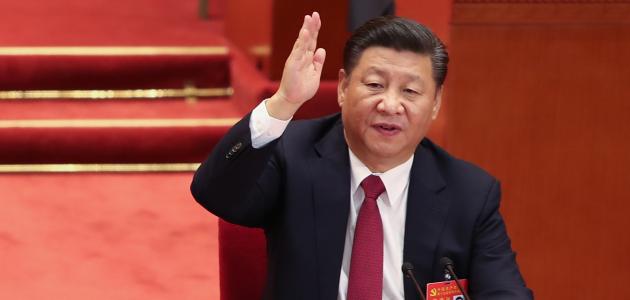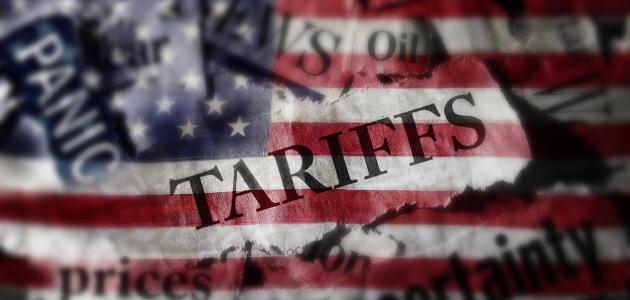In this week’s edition, the U.S. arms industry turns to international collaboration due to domestic manufacturing hurdles. China's influence campaigns on social media evolve with the use of AI-generated content, posing new challenges. Meanwhile, the FBI dismantles the Qakbot botnet, and Seattle attracts young tech talent while struggling to retain experienced professionals in a shifting job market.
Industrial Policy & International Security
Pentagon Plans Vast AI Fleet to Counter China Threat | The Wall Street Journal
In a bid to confront emerging challenges posed by China and other potential adversaries, the Pentagon has revealed its goal to deploy an expansive array of AI-driven technology, drones, and other systems within the next two years. Kathleen Hicks, the deputy secretary of defense, outlined the department's intentions to invest in producing thousands of air-, land-, and sea-based artificial intelligence systems. These systems are intended to be "small, smart, cheap" and will serve various purposes, including logistics, monitoring, and missile defense. The initiative is a response to China's rapid military expansion and technological advancements. While specific details and funding remain to be determined, the Pentagon aims to move urgently to keep pace with evolving threats.
AI and the New Digital Cold War | Harvard Business Review
Hemant Taneja and Fareed Zakaria argue that we are entering a new era – what they call a “Digital Cold War – marked by rising nationalism, increased geopolitical competition, and a division of the technology ecosystem into two spheres dominated by the United States and China. Artificial intelligence is at the forefront of this competition. They argue that in order for democratic nations to succeed, collaboration is vital. The West must unify its regulatory frameworks and cooperate internationally to compete against China's centralized approach. Failure to do so could lead to Chinese dominance in AI, impacting global infrastructure and democratic values. Responsible innovation and collaboration are essential for Western companies to lead in the AI-driven future, fostering societal transformation while mitigating risks such as misinformation and the erosion of democracy.
How Biden's climate law is fueling the U.S. battery boom | Axios
Investors have become more confident about the growth of the American battery industry. Daimler Truck, Cummins, and Paccar have announced a joint venture to invest $2-$3 billion in making batteries for commercial and industrial use. Additionally, BlackRock and Temasek are investing $542 million in battery materials firm Ascend Elements, while Oman's wealth fund is investing into Our Next Energy, another American battery company. These investments are part of a broader push to establish the U.S. as a significant player in the battery industry, driven by President Biden's 2022 Inflation Reduction Act, which provides subsidies for domestic battery manufacturing and links consumer EV purchase incentives to domestically sourced materials. Despite these efforts, China remains dominant in the battery market.
US Regulation
In Its First Monopoly Trial of Modern Internet Era, U.S. Sets Sights on Google | The New York Times
The U.S. Justice Department has filed a lawsuit alleging that Google illegally gained its dominant market share by paying device manufacturers like Apple to be the default search engine on their products. Google has argued that because these contracts were not exclusive, and consumers still had the option to switch to other search engines, they did not break the law. Set to begin on Tuesday, September 12, the trial has the potential to slow the growth of other tech giants like Amazon, Meta, and Microsoft, who have all faced similar accusations of monopolistic behavior.
Innovation
New phone sparks worry China has found a way around U.S. tech limits | The Washington Post
The launch of Huawei's Mate 60 Pro smartphone, which features an advanced chip designed and manufactured in China, has raised concerns in Washington that U.S. sanctions are not preventing China from progressing technologically. Previously, the manufacturing of high-end chips that underpin technologies like personal computing and artificial intelligence depended on systems that the U.S. could control access to. However, sanctions put in place by the Trump White House spurred China to accelerate the development of an independent domestic semiconductor industry. Industry experts caution that it's still too early to gauge the competitiveness of China's chipmaking operations. While some are calling for tighter export controls, others argue that U.S. semiconductor companies would prefer to continue supplying Huawei to maintain market share.
Cyber
How the FBI took down the notorious Qakbot botnet | Tech Crunch
In a major international law enforcement effort named "Operation Duck Hunt," the Qakbot botnet has been successfully taken down. Qakbot is a banking trojan that gives cybercriminals initial access to victims' networks, allowing them to deliver various forms of malware. In just the past 18 months, Qakbot was used in over 40 ransomware attacks which earned $58 million in ransom payments. Led by the FBI in partnership with international allies, the operation involved taking control of Qakbot's infrastructure. This allowed the FBI to redirect the botnet's network traffic to servers under its control, which they used to distribute an uninstaller. Additionally, over $8.6 million in cryptocurrency belonging to the Qakbot cybercriminal organization was recovered and will be returned to victims.
Panasonic Warns That Internet-of-Things Malware Attack Cycles Are Accelerating | WIRED
Based on a five-year effort examining attacks on the products of the company, Panasonic has developed a plan for enhancing the security of IoT devices. Corporate researchers used Panasonic household appliances and other connected equipment to build honeypots that attracted attackers, catching malware samples for analysis. The Threat Resilience and Immunity Module (Threim), an IoT security solution from Panasonic, uses this data to identify and stop malware on its devices. The company's strategy places emphasis on the significance of sending patches to deployed IoT devices and on the manufacturer's duty to create security plans as opposed to depending on third parties for assistance.
State & Local Tech Ecosystems
'Where ambition goes to die': These tech workers flocked to Austin during the pandemic. Now they're desperate to get out. | Business Insider
In the past few years, many tech workers relocated from California to Austin in search of a more affordable and dynamic lifestyle. However, some of these transplants are now regretting their move, citing factors such as extreme temperatures, traffic, overcrowding, and an underwhelming tech scene. While Austin saw an influx of tech companies like Tesla and Oracle, many of the actual jobs created consist of lower-skilled roles like customer service and sales. This has resulted in the city having a lower talent density compared to the Bay Area, making it harder for startups to find competent engineers or investors. The collapse in housing prices and rising interest rates also make it challenging for some to leave Austin. Despite its initial appeal, Austin's tech scene is experiencing growing pains as some newcomers reconsider their choice to move there.
Seattle remains a top town for tech talent, but there’s a catch | The Seattle Times
Seattle is attracting young tech talent, with the number of young tech professionals in the city increasing by 15.2% between February 2022 and February 2023, the highest among all U.S. markets, according to a report by CBRE Americas Consulting. Seattle has nearly 290,000 tech workers, making it one of the top 10 metros for tech employment in the U.S., and the tech industry accounts for nearly 30% of the local economy. Despite recent tech layoffs at major companies like Microsoft, Google, Amazon, and Meta, Seattle was among the top three cities for tech job growth in 2022. However, experienced tech professionals are more likely to move to lower-cost Sun Belt cities in Texas, Florida, or North Carolina. Seattle’s inability to attract older tech workers puts it behind Austin in terms of tech sector growth rate, and reflects a more general trend of senior tech workers moving away from coastal cities towards emerging Sun Belt technology hubs.
Democracy Online
Meta’s ‘Biggest Single Takedown’ Removes Chinese Influence Campaign | The New York Times
Meta conducted its largest takedown of a single network yet, removing 7,704 Facebook accounts, 954 Facebook pages, 15 Facebook groups, and 15 Instagram accounts linked to a Chinese influence operation. The network, which was discovered in 2019, was first used to attack the pro-democracy movement in Hong Kong. In 2020 it pivoted to blaming the United States for Covid-19, and has continued to create posts designed to inflame tension in the United States ever since. The influence operation targeted audiences speaking various languages across many websites including Facebook, Instagram, TikTok, Reddit, Medium, Tumblr, and YouTube, but was found to be ineffective in part due to grammatical errors and spelling issues.
How China-linked accounts are using AI on social media | The Washington Post
Chinese government-affiliated influence campaigns on social media are increasingly using artificial intelligence to enhance their content and reach, according to Microsoft. These campaigns have evolved to create more sophisticated and engaging visual content since around March 2023. AI-generated images have helped generate higher levels of engagement on social media platforms. These influence operations are happening at the same time as Chinese hackers increase their focus on the US government, military, and other entities in the South China Sea. The Chinese government has banned the use of stable diffusion and other generative AI tools domestically, further indicating the potential the CCP sees in the technology.














